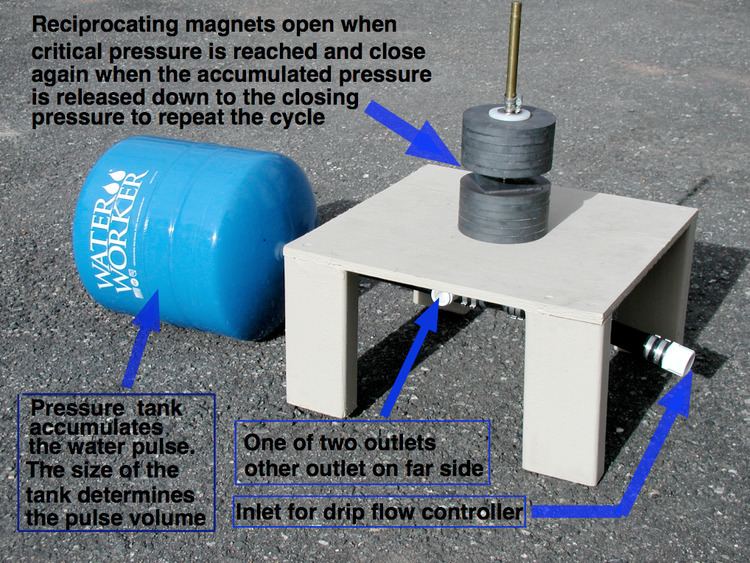 | ||
Pulse drip irrigation is a scalable low-flow irrigation technique that allows for close management of water usage and can be employed with either drip or sprinkler irrigation devices and extend conventional low-flow irrigation systems to ultra-low micro-irrigation levels. Pulse irrigation is common in locations such as Israel where water conservation is a priority.
Contents
Pulse drip irrigation systems operate by passively letting water flow into a reservoir at a controlled rate to steadily build pressure within the pressurized reservoir. When the pressure in the reservoir reaches some predetermined pressure level the valve on the reservoir opens and a portion of the fluid contained within the reservoir is forcefully discharged. While the fluid is discharging the pressure within the reservoir decreases. When the decrease in water pressure reaches a predetermined level the valve closes to resume the charging phase. The charge-discharge cycling will continue as long as the flow rate coming in through the inlet is less than the expel rate passing out through the outlets while the valve is open. A device called a drip flow controller is placed at the inlet for this purpose to regulate the flow into the inlet.
Low-flow pulse systems can be left operating continuously without overwatering. Constant and frequent irrigation applications have been cited as one way to reduce water demand. Some literature also cite the benefits of small frequent watering applications to reduce water stress on plants.
Low-flow application rates can grow in different mediums. The water can be applied slowly enough to match the water assimilation rate and prevent water loss from percolation or run-off. Mineral nutrients added to mediums with a high void content such as coarse grained sand will provide more oxygen to roots than ordinary soil and share some of the advantages with aeroponics. Sand also has a low water retention potential that makes it easier for plants to extract water by expending less energy due to the sand's relatively large particle size, which consequently does not bind very well to water. This increases the plant's water-use efficiency. Sand is also inhospitable to pathogens that can attack roots.
Advantages
Pulse drip irrigation has many advantages for drip and sprinkler systems:
